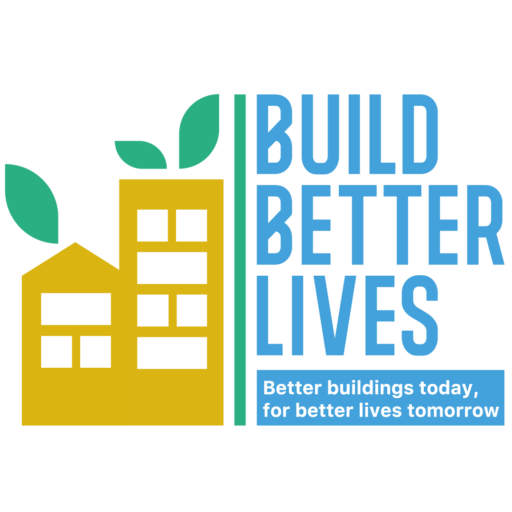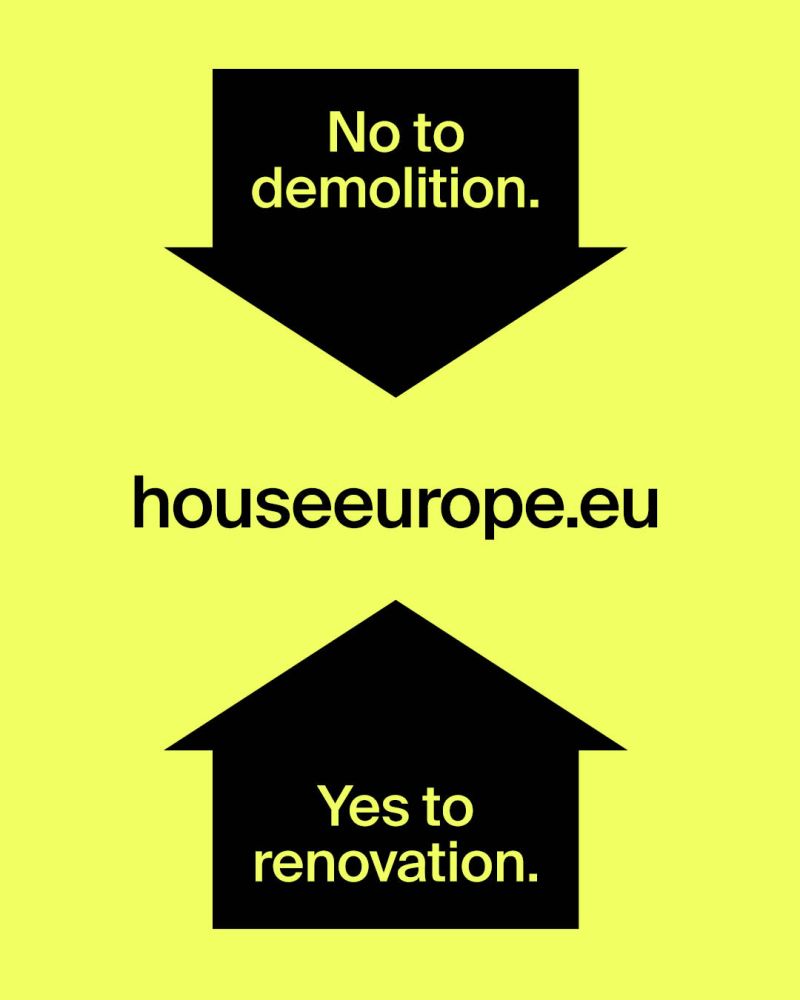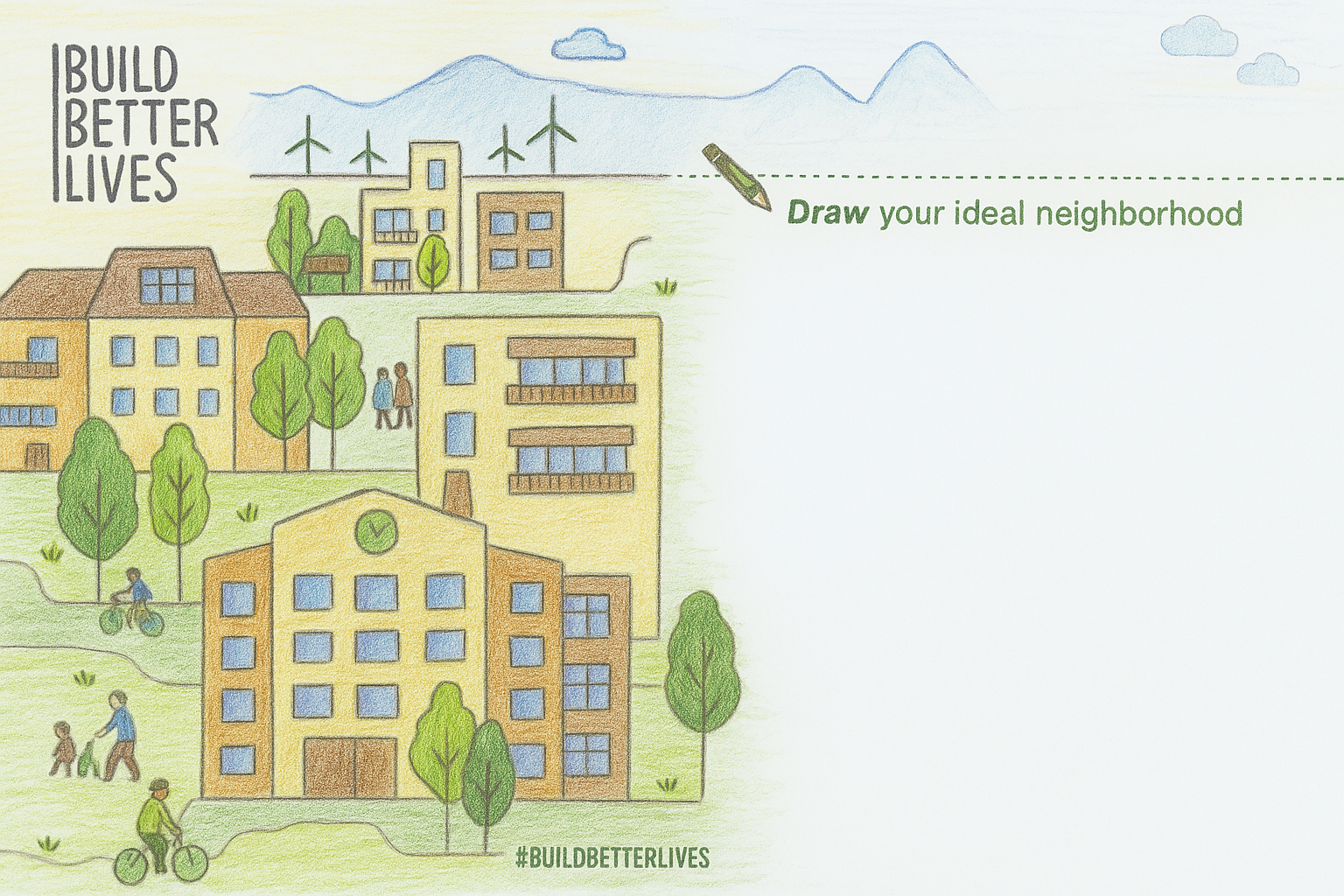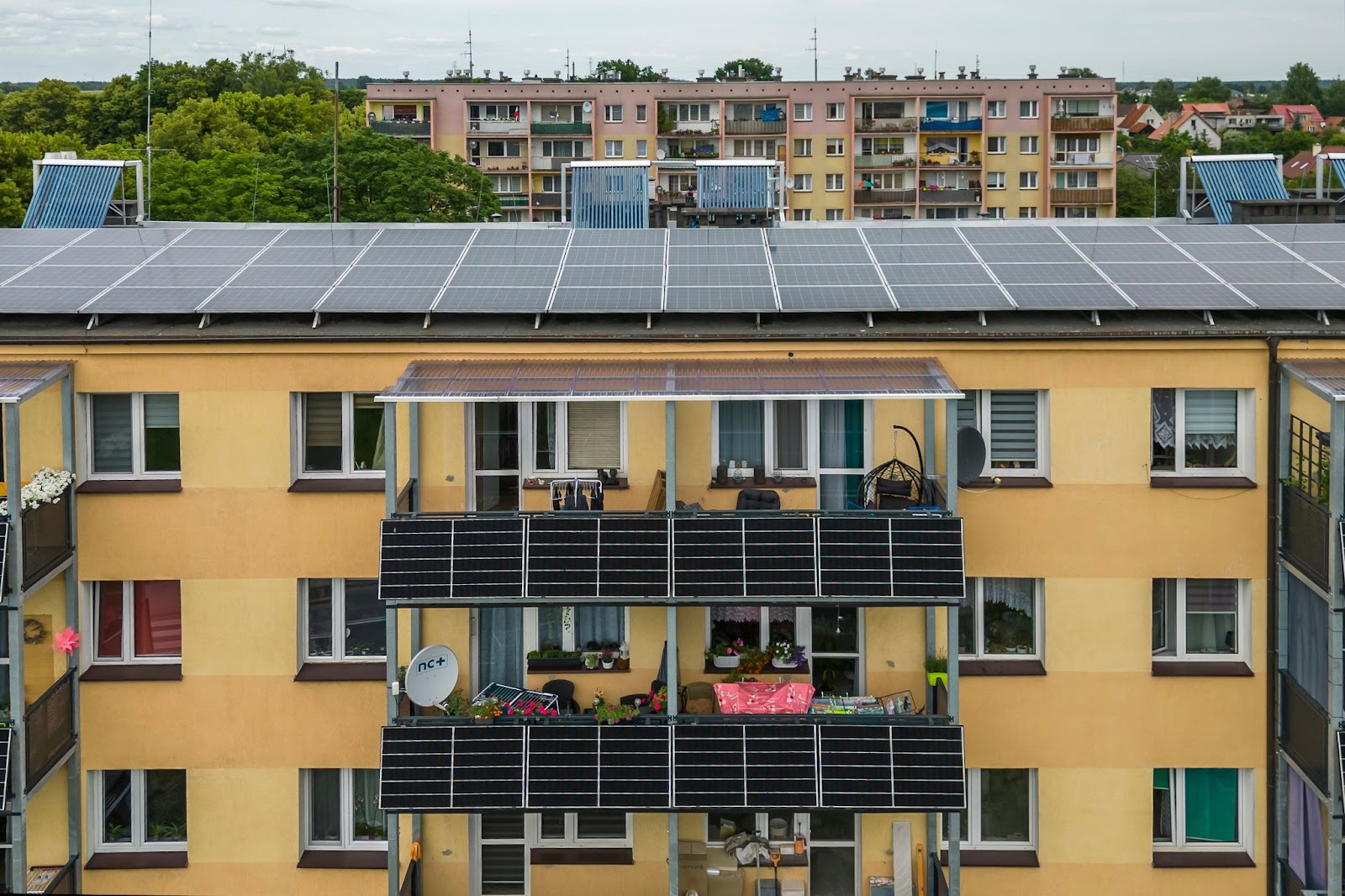
Szczytno, Ceglowo, Bartoszyce, POLAND
In the face of rising energy costs, climate breakdown, and outdated housing stock, Polish communities are proving that bold, people-powered solutions can deliver lasting change. From small towns to rural areas, residents, local innovators, and small businesses are leading a quiet revolution—turning once energy-hungry buildings into comfortable, self-sufficient homes.
Long before the war in Ukraine sent energy prices soaring, tenants in Poland’s ageing prefab apartments were already seeking alternatives to the expensive and polluting coal. What started as a practical response to high energy bills has grown into a movement, showcasing that ambitious building decarbonisation is possible—and that it delivers real benefits. These are not just abstract policies or distant targets; they are tangible improvements in people’s daily lives.
Bottom-up action towards self-sufficiency
Take Szczytno, where a group of tenants decided to take control of their energy future. Faced with high heating costs and inefficient buildings, they worked with local entrepreneur Adam Duraj to implement a groundbreaking solution: deep geothermal boreholes, heat pumps, and rooftop solar panels.
The idea was born out of necessity—residents of 12 Śląska Street, housed in a prefabricated Communist-era apartment block, sought a way to reduce their reliance on expensive and polluting coal heating. Initially met with skepticism, their determination led them to drill 24 boreholes, each nearly 100 meters deep, to harness the earth’s natural heat. Adding to that they harnessed the sun’s energy by installing solar panels on the roof to power heat pumps. By 2017, the residents had fully disconnected from the coal-fired heating plant. Even gas stoves were eliminated in favour of additional solar panels and improved energy efficiency measures. In just a few years, they transitioned from relying on coal to generating their own heat and electricity. Today, their energy bills are stable, their homes are more comfortable, and they no longer breathe in toxic coal fumes.
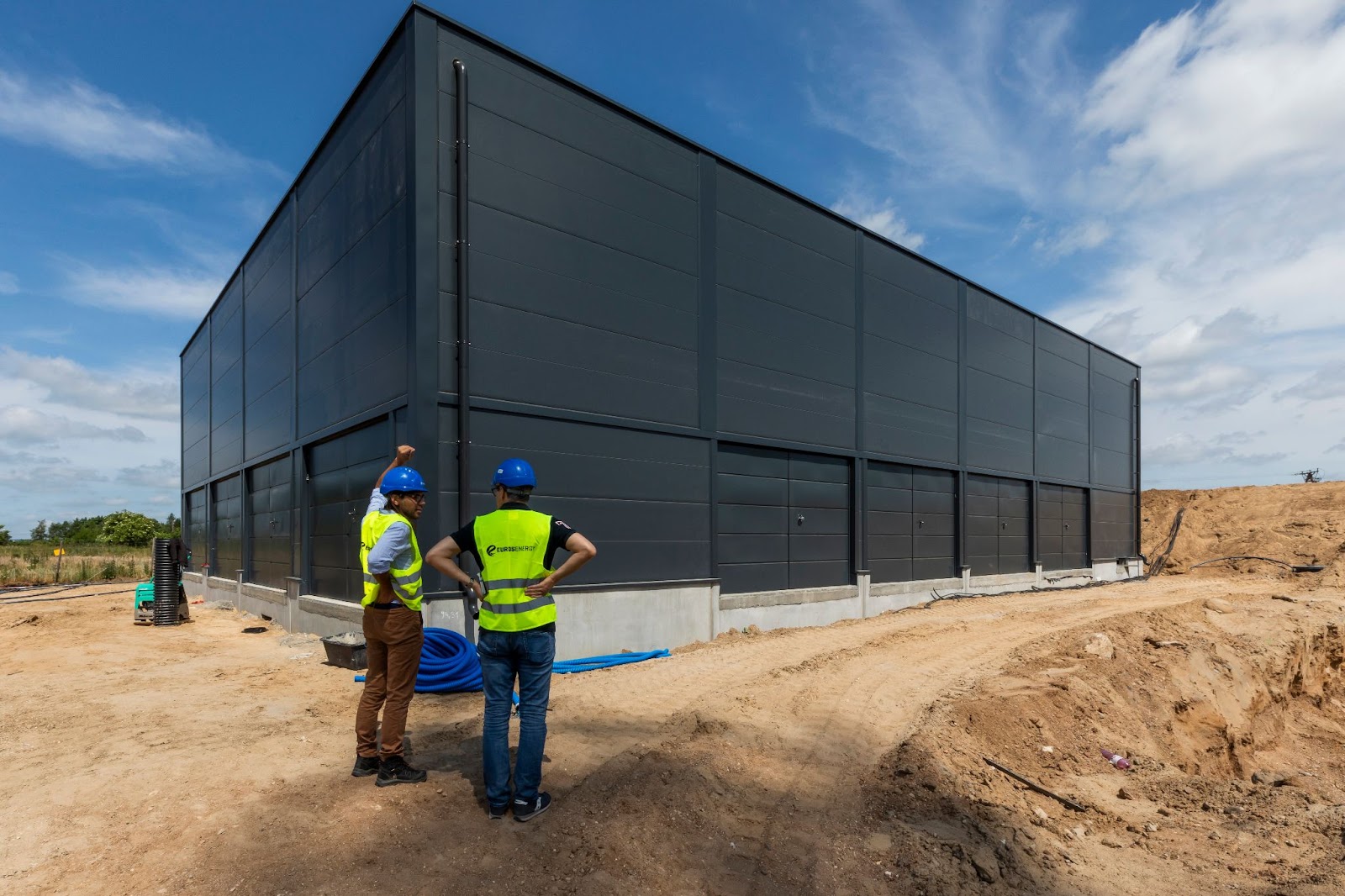
And they are not alone. In Ceglowo, a housing association replaced its outdated coal heating system with a fully renewable solution, protecting 76 families from the energy price shock of 2022. Meanwhile, in Bartoszyce, residents of 100 buildings are embracing heat pumps and solar panels, securing long-term affordability and independence from volatile fossil fuel markets.
The message is clear: when communities have access to the right technologies and financing, they can lead the transition themselves.
Making clean energy accessible to all
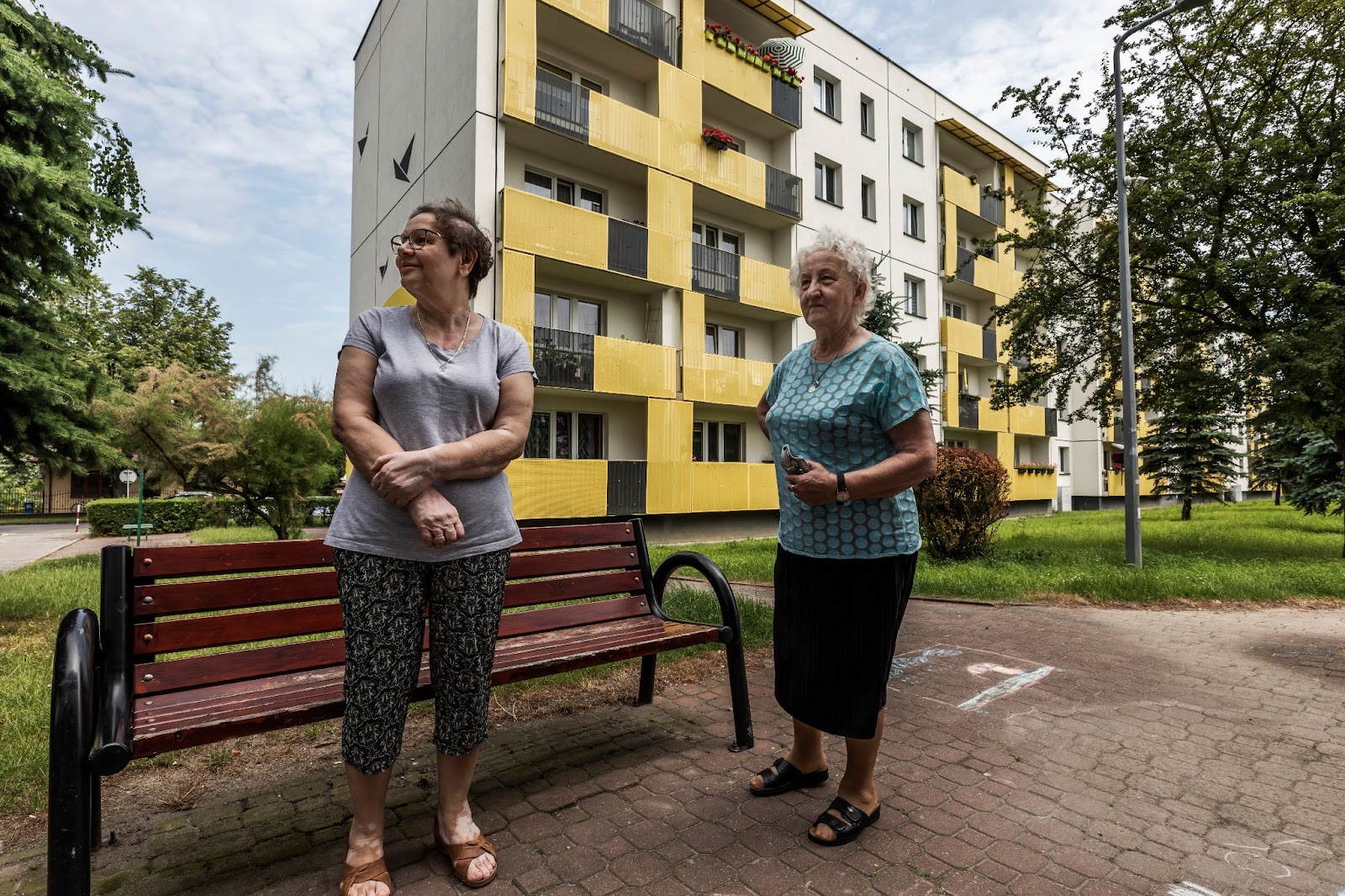
One of the exciting aspects of Poland’s transformation is the innovative financing models making deep renovation possible for all income groups. Euros Energy, a pioneering company in retrofit solutions, offers a game-changing approach: residents pay for their renovations using the savings generated from their dramatically reduced energy bills. No upfront costs, no financial barriers—just affordable, efficient, and future-proof housing.
This model is proving particularly vital in smaller towns, where energy poverty has historically been a pressing issue. In places like Bartoszyce, Euros Energy is working with local housing associations to retrofit entire neighborhoods. By installing heat pumps and photovoltaic panels and replacing outdated coal-based systems, they’re providing residents with energy independence at a fixed, predictable cost. The savings on heating bills are so substantial that they completely offset the cost of financing the upgrades, meaning homeowners don’t experience financial strain during the transition.
As one resident put it: “At first, we weren’t sure. But now, our homes are warmer, our air is cleaner, and our bills are lower. What’s not to love?”
From inspiration to action
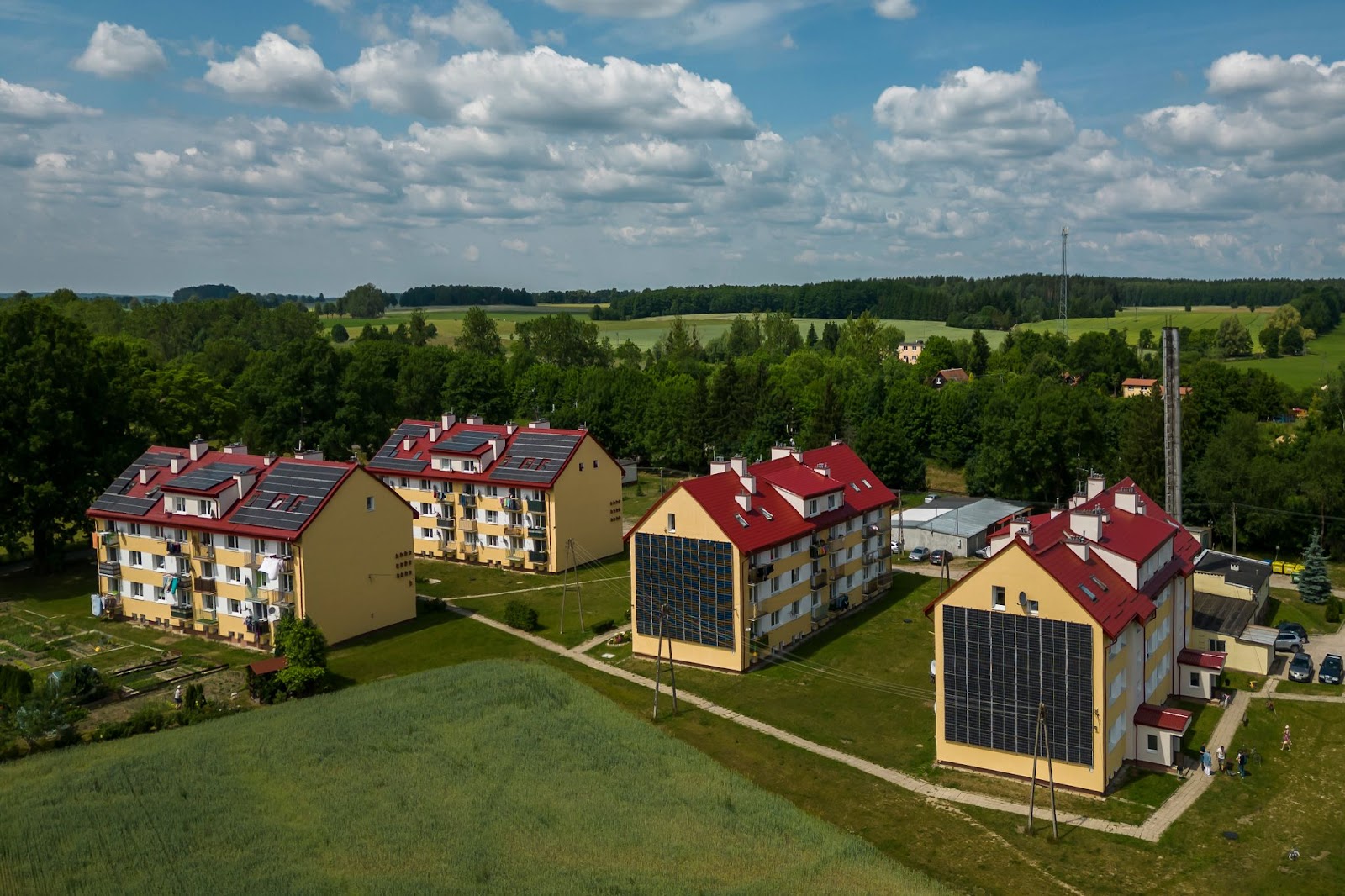
The message from Poland is clear: solutions exist, they work, and they are already transforming lives. But the pace of change is too slow. With 70% of Polish buildings still in urgent need of renovation and millions trapped in energy poverty, action must accelerate. It proves that ambitious building decarbonisation is not only possible but necessary, and that when communities, businesses, and policymakers align, the benefits ripple far beyond energy savings. Cleaner air, lower bills, energy security, and resilient communities—this is what building better lives looks like.
These stories should not remain isolated successes. They should serve as blueprints for a fair, inclusive energy transition across Europe. The solutions exist. The momentum is growing. Now, we must ensure that every household—regardless of income or location—has access to comfortable, climate-friendly housing.
The future is not something we wait for. It’s something we build—together. Let’s build better lives.
